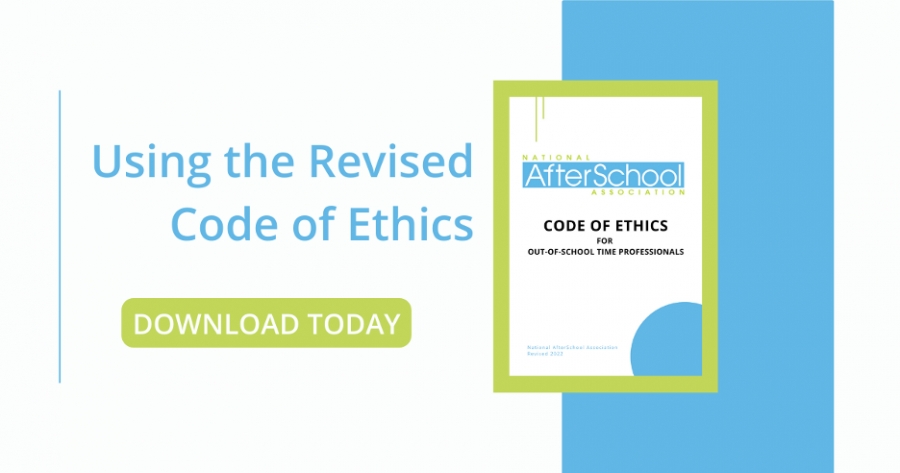Most professions have a code of ethical conduct. This code provides the practitioners of that profession a lens for understanding important issues as well as a framework for making tough decisions. The Out-of-School Time field is diverse and primarily relationship-based which can lead to conflicts of interest, diverging goals, and often situations where the best course of action is unclear. OST has the NAA Code of Ethics to navigate dilemmas and highlight ethical considerations when working with young people, families, and colleagues. It is important to not only introduce staff to the Code of Ethics but to use these ethics as a guide for decision-making in challenging circumstances. The NAA Code of Ethics for OST Professionals was first published in 2009 then reviewed with an equity lens and revised in 2022.
“The purpose is to raise awareness of OST professional personal commitments to ethical conduct as we carry out our responsibilities.”
Ethics as a Framework
Professional ethics provide a framework for staff to understand the many nuances of a tough situation. Through the Code of Ethics, staff can identify the elements under consideration and prioritize them. For example, if a staff member is asked by school principal to share information about a specific young person with the school counselor and the program policies do not offer specific guidance on whether they can or cannot do this, the staff member can look to the Code of Ethics for guidance. The third principle states, “Communicate openly and clearly, and respect and protect confidentiality.” The staff member can consider confidentiality and then make a decision to speak with the counselor or not. In this scenario, the first step would be to check with their supervisor. However, if the staff member does not have a direct supervisor or the program administrator is unsure, the Ethics can provide them with a framework for making decisions
Ethics as Discussion Starters
The Code of Ethics can also be a great discussion starter. During staff meetings, trainings, or other opportunities, leaders can choose one of the principles and pose questions for how their staff might or should respond to a specific scenario. For example, “Appreciate, support, and respect healthy family relationships” could be paired with a discussion about a group sharing session about how the staff and program support families and how they show respect for differing parenting styles and value systems. These discussions can prompt staff to reflect on their practices and challenge them to improve the quality of services offered.
Ethics as Professional Development
In addition, the Code of Ethics can be used to develop, deliver, and connect professional development opportunities. Training can be created around the Code as a whole or linked to specific principles. For example, if a session is offered on family engagement, the principles related to family can be incorporated into the content and/or referenced during the session. Organizations can use the Code of Ethics to discuss current practices and identify ways to increase the quality of programs.
Reflection
How might you use the Code of Ethics to improve practice? In what ways can you begin the discussion around ethics and the profession? How can you be a leader in demonstrating ethics in your work with young people, families, schools, and communities? What resources or tools do you need to do this?
The NAA Code of Ethics is a simple yet powerful tool that can be a great resource for individuals or programs. Consider making it a part of your staff orientation and a living document with your program’s structure.
Adapted from Code of Ethics in Professional Development, AfterSchool Today, Fall 2012


